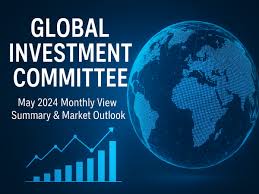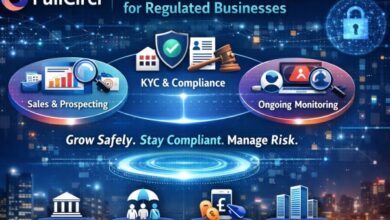Global Investment Committee: Driving Global Investment Strategy and Risk Management

Introduction
In the modern financial landscape, decision-making is rarely left to one individual. Instead, institutions rely on highly specialised teams that combine global insights, economic expertise, and disciplined processes. At the heart of this structure is the Global Investment Committee (GIC), a body that defines investment strategy, ensures strong governance, and guides asset allocation for firms and their clients.
This article explores the functions, structure, benefits, and challenges of Global Investment Committees. We will also examine how they influence long-term investment outcomes, the risks they manage, and why they are essential in today’s volatile markets.
What is a Global Investment Committee?
A Global Investment Committee is a high-level decision-making body within an asset management firm, private bank, or wealth management institution. It is typically composed of senior investment professionals, such as chief investment officers, strategists, economists, and portfolio managers.
The committee’s role is to evaluate the global economic landscape, set strategic priorities, and translate them into actionable investment guidance. It effectively acts as the “brain” of an investment organisation, ensuring that every portfolio benefits from a unified and disciplined approach.
The Core Responsibilities of a Global Investment Committee
Setting Economic and Market Outlooks
One of the most important functions of a GIC is to assess global economic trends. This includes analysing GDP growth forecasts, inflation dynamics, interest rate movements, and geopolitical risks. From this analysis, the committee builds a base case scenario and identifies alternative outcomes that may affect markets.
Strategic and Tactical Asset Allocation
Once the outlook is clear, the committee makes recommendations on where to allocate capital. Strategic asset allocation focuses on long-term positioning, while tactical allocation involves shorter-term adjustments to take advantage of market opportunities or manage risks.
Risk Oversight and Scenario Testing
The GIC ensures portfolios remain robust under different market conditions. By conducting stress tests and scenario analysis, the committee can measure the potential impact of unexpected shocks—such as sudden interest rate hikes, market crashes, or political instability.
Model Portfolio Development
Many investment firms use model portfolios as benchmarks for clients with different risk appetites, ranging from conservative to aggressive. The GIC oversees these models, ensuring they reflect the latest insights and maintain consistency across geographies and products.
Structure of a Global Investment Committee
Composition of Members
A GIC usually includes:
-
Chief Investment Officer (CIO) – often chairs the committee.
-
Economists and Strategists – provide macroeconomic perspectives.
-
Asset Class Specialists – experts in equities, fixed income, alternatives, and real assets.
-
Risk Managers – oversee potential exposures and downside risks.
Meeting Frequency
Committees typically meet monthly or quarterly, though extraordinary meetings may be called during times of crisis or heightened volatility.
Decision-Making Process
While consensus is often the goal, some committees use a voting system. Decisions are carefully documented, with clear rationales recorded for compliance and governance purposes.
The Importance of Global Investment Committees
Ensuring Consistency
Without a GIC, investment decisions risk becoming fragmented. The committee ensures that every client portfolio aligns with the firm’s central vision and philosophy.
Professional Expertise
A GIC pools together the knowledge of seasoned professionals from diverse backgrounds. This diversity reduces blind spots and provides a more balanced perspective on global events.
Strong Governance
Investment firms face fiduciary responsibilities towards their clients. A GIC creates transparency, accountability, and structured oversight, which protects both the firm and its investors.
Challenges Faced by Global Investment Committees
Groupthink
If not managed well, committees may fall into groupthink, where dissenting voices are discouraged. This can lead to overconfidence and poor decision-making.
Responsiveness
Markets move quickly. While committees provide discipline, their structured processes can sometimes slow down responses to sudden shifts.
Implementation Gaps
Even the best strategy is ineffective without proper execution. A challenge for GICs is ensuring that portfolio managers and client advisors implement recommendations in a timely manner.
Best Practices for Effective Global Investment Committees
Diverse Membership
Including professionals from different regions and disciplines reduces the risk of bias and creates a more rounded perspective.
Clear Mandates
A well-defined charter outlines the committee’s authority, responsibilities, and decision-making framework. This clarity ensures accountability.
Regular Review and Adaptation
Markets evolve, and so must the committee. Regular reviews of strategies and assumptions allow for necessary adjustments in volatile conditions.
Strong Documentation
Keeping detailed minutes and rationale for decisions strengthens governance and ensures compliance with regulatory standards.
The Impact of Global Investment Committees on Investors
For clients, the work of the GIC translates into portfolios that are:
Diversified across geographies and asset classes.
Aligned with long-term themes and opportunities.
Protected against market volatility through stress-tested strategies.
Guided by a disciplined and professional governance framework.
Investors may never meet the committee members, but their influence is embedded in the structure of every portfolio, from pension funds to private wealth accounts.
The Future of Global Investment Committees
Integration of Technology
Artificial intelligence, big data, and advanced analytics are increasingly shaping investment decisions. Future GICs are likely to rely heavily on these tools to enhance forecasting accuracy and portfolio construction.
Sustainability and ESG Considerations
Environmental, Social, and Governance (ESG) factors are becoming central to investment strategy. Modern committees now integrate sustainability into their decision frameworks, reflecting both client demand and regulatory pressures.
Global Collaboration
As capital flows transcend borders, GICs are evolving into more globally connected bodies, ensuring they can capture opportunities in both developed and emerging markets.
Conclusion
The Global Investment Committee plays a pivotal role in modern investment governance. By combining expertise, discipline, and a structured decision-making process, it ensures that portfolios remain resilient, forward-looking, and aligned with long-term goals.
In a world marked by uncertainty—from economic cycles to geopolitical events—the GIC acts as both a compass and a guardrail. For investors, its work may be invisible, but its impact is undeniable. As technology advances and sustainability becomes central to finance, the Global Investment Committee will continue to shape how capital is allocated across the world.



